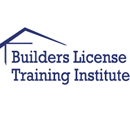Online anytime - 6-Hour FL Contractor License Required Competency Online Anytime
Training Provider: Builders License Training Institute
Online anytime
 No Reviews
No Reviews
| TICKET TYPE | PRICE | QUANTITY |
|---|---|---|
|
One Workshop Ticket more info» | $59.00 | |
Or call: 954-400-0595 | ||
Why Should You Take 6-Hour FL Contractor License Required Competency Online Anytime Course?
This 6-Hour FL Contractor License Required Competency Online Anytime Course fulfills requirements for registered contractors and certified contractors. For Registered Contractors and Certified Contractors the renewal deadline is August 31st. All Registered Contractors and Certified Contractors are required to complete fourteen (14) hours of continuing education each renewal cycle.
Of the fourteen hours, one hour is required in each of the following topics:
- Workplace Safety (lead remediation)
- Business Practices (Lien Law)
- Worker’s Compensation
- Construction Laws and Rules
- Wind Mitigation.
*This 6-Hour courses fulfills the required core competency topics for Florida contractors.
Please Note: This is a 6-hour course for those contractors that may have already earned 8 hours of continuing education through an 8-Hour EPA Lead Renovator (RRP) course in Florida, or for those that only need the six (6) core comptency hours for renewal. Students will have up to six months of access to course content.
Does This Continuing Education Package Meet State Requirements?
YES! All of our courses are approved by the Florida Construction Industry Board.
Are These Courses Approved for Building Inspectors and Contractors?
Yes, our courses fulfill the requirement for both building inspectors and certified and registered contractors.
When Does My License Renew?
Certified Contractors renew their license by August 31 each even-numbered year.
Registered Contractors renew their license by August 31 each odd-numbered year.
Chapter 1 - Workplace Safety. This chapter describes the most pertinent aspects of jobsite safety regulations. Beginning with OSHA regulations surrounding proper recordkeeping and general first aid and sanitary provisions, the course continues with the fundamental requirements of Personal Protective Equipment, Fall Protection, Tool Safety, Stairway and Ladder Safety, and Excavation requirements. Finally, a comprehensive module on asbestos and lead remediation covers the safe handling of asbestos and lead based materials.
*Learning Objectives:
1) Describe the causes of the most common workplace injuries
2) Name the Personal Protective Equipment (PPE) most often used to protect workers
3) Describe methods of fall protection available to workers
4) Gain a basic understanding of Lead Remediation.
A. Health Regulations and Recordkeeping, Postings, Competent Person
B. General Interpretations: Rules, First Aid, Material Safety Data Sheets, Sanitation, Illumination
C. Personal Protective Equipment, Fire Prevention, Signs, Signals, Barricades, Material Handling
D. Tools: Hand and Power
E. Scaffolds
F. Fall Protection: Systems Criteria and Practices
G. Excavation, Stairs, Ladders, Steel Erection
H. Hazards
I. Asbestos and Lead Safe Handling Practices
J. Egress & Fire Protection
Total = 136 minutes
Chapter 2 - Florida Lien Law. A lien is a specific legal process that can be used by contractors and others as a lawful remedy for securing payment for labor or materials that have been used to improve another person’s property. Lien laws are also designed to give protection to laborers and material suppliers in the event of default by the contractor or property owner. Unfortunately, many contractors, subcontractors and material suppliers do not understand the importance of filing the proper documents at the correct time, therefore forfeiting their chances of recovery. This 1 hour chapter outlines the documents required, and the order in which they must be submitted in
order to protect the claimant’s rights.
*Learning Objectives:
1) Explain how lien laws protect the rights and interests of both the builder and the consumer
2) Define what a lien is, as well as how and when a lien should be filed
3) Understand both owner and contractor time limitations for filing and preserving lien supporting documents and lien rights.
A. What is a lien and who is entitled to file?
B. Notice of Commencement: who files, when should the NOC be filed? What must be included in the NOC?
C. Contractor List: what is it? And when must it be furnished, to whom?
D. Notice to Owner: who sends the NTO, and what information does it provide?
E. Contractor Payment Affidavit: what does this document state? When must it be sent, by whom?
F. Claims of Lien: What is it? When must it be filed, and what must it include?
G. Timelines
H. Statutes: 713 Part 1
Total = 63 minutes
Chapter 3 - Workers’ Compensation. Employers in Florida are required by law to pay for the medical treatment and lost wages of employees who are injured on the job or suffer a job-related illness. The underlying principle is that employers must assume the costs of injuries, illnesses and deaths that occur on the job. In Florida, workers’ compensation is regulated by the Department of Financial Services and the Office of the Judges of Compensation Claims, and enforced by the Florida Division of Workers’ Compensation. This 1 hour chapter describes the rules and responsibilities of employers in complying with Florida Workers’ Compensation laws.
*Learning Objectives:
1) Identify the laws and regulations of Florida Workers" Compensation
2) Understand the process of claim reporting
3) Explain the best ways to manage workers" compensation costs.
A. Workers’ Compensation overview, responsible state entities, four components of WC: medical expenses, disability pay, vocational rehabilitation and benefits to dependents.
B. Florida Rules and Regulations, postings, key coverage requirements,
exemptions, penalties.
C. Enforcement and Authority, failure to comply, Stop Work Orders.
D. Injury and Illness Reporting, the Benefit Delivery Process and mediation and hearing procedures.
E. Managing Claims and Costs of WC, workplace safety programs and incentives.
F. Frequently Asked Questions
Total = 27 minutes
Chapter 4 - Florida Construction Statutes and Rules. This chapter will provide builders with an understanding of the Florida construction statutes and rules as they pertain to the industry. Students will be able to define the powers and duties of the various departments, boards and agencies that make up the Florida Department of Business and Professional Regulation. The rules, penalties and fines surrounding the construction industry are outlined, as are the licensing procedures and requirements. Being familiar with these regulations allows contractors to better operate within the boundaries of the law, and to fulfill their responsibilities to employees,
customers and the government.
*Learning Objectives:
1) Define the powers and duties of the Construction Industry Licensing Board
2) Describe the rules, penalties and fines as they pertain to the regulations surrounding the building and construction industry
3) Understand the licensing procedures and requirements for contractors
4) Describe continuing education requirements
5) Explain how complaints/hearings are handled by the State.
A. Purpose, Definitions and Exemptions
B. The Construction Industry Licensing Board: members, authority, fees and examination.
C. Qualifications for licensure: certification, registration, workers’ compensation.
D. Renewals and continuing education. Inactive and delinquent status.
E. Business entities and Qualifying agents.
F. Prohibitions and penalties. Disciplinary proceedings.
G. Homeowner’s Recovery Fund.
Total = 58 minutes
Chapter 5 - Wind Mitigation. This 1 hour chapter describes wind mitigation methodology, comparing the C-brace system and the X retrofittings. The aftermath of past hurricanes in Florida has shown that one of major damaged structural components in residential homes is the gableend wall or the gable-end truss for timber wall or masonry wall constructions, respectively. As a result, a revised building code, "Standard for Hurricane resistant residential Construction" (SBCCI, 1993, 1999) was developed to require all gable-ends to be designed to resist hurricane force wind. This
research investigates two different retrofit systems: (1) X-bracing and (2) C-bracing to determine their structural performance under hurricane wind.
*Learning Objectives:
1) Recognize the need for alternate, lower-cost means to the installation of gable-end bracing
2) Identify new Florida Code requirements that address specific, identified mitigation measures
3) Differentiate between the C-brace system and the X retrofittings.
A. Florida Statutes 553.844. Windstorm loss mitigation; requirements for roofs and opening protection.
B. Investigation abstract, history and purpose.
C. Methodology, construction of gable end walls, trusses, design.
D. Retrofits: X-brace and C-brace.
E. Loading and data collection.
F. Results and Conclusions.
Total = 28 minutes
Review – 15 minutes
| COURSE LOGISTICS | |
|---|---|
| Certificates | For live classes, certificates will be issued on day of course completion. |
| Food | No food provided |

The Builders License Training Institute helps thousands of builders and contractors get licensed and complete their continuing education requirements each year. Our courses are builder-friendly and guide you through every step of the process. All of our courses are created by real builders with decades of experience and expertise. Study at your own pace 24/7 from any computer or mobile device.

Questions? 954-400-0595


